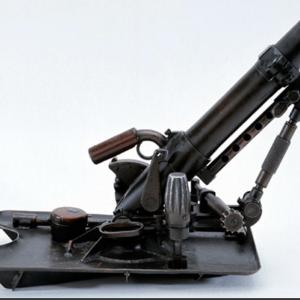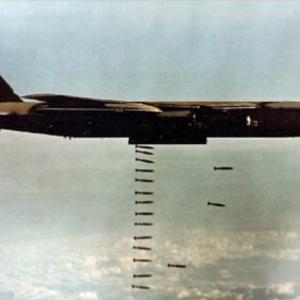
Carcano rifle m91
The Carcano M91, properly designated Modello 1891 (often called the Carcano), was the standard Italian service rifle from the closing years of the 19th century through both world wars and beyond in secondary use. It was developed as Italy modernized its armed forces and sought a light, serviceable bolt-action rifle that would use a small, smokeless-powder cartridge. The rifle’s basic action and feeding concept trace to the work of Salvatore Carcano, an inspector at the Turin arms works, and to design developments made by Italian arsenals and engineers in the 1880s–1890s that produced the Mannlicher-style en bloc clip system used in the adopted rifle. The name “Carcano” became the common identifier for the family of rifles and carbines built on that basic 1891 pattern.
Manufacture took place at the state arsenals and at contracted Italian factories. Principal government production came from the Turin Arsenal (Arsenale di Torino) and other state armories; during the two world wars production was expanded and subcontracted to several Italian firms and arsenals to meet demand. The Modello 1891 formed the core of Italy’s infantry small arms through World War I and remained in wide use, in various updated forms and conversions, through World War II. After 1938 Italy introduced a new short rifle and a new cartridge (7.35×51 mm) for a later pattern (Modello 1938), but the large bulk of Italian rifles in service in both wars were still M91-type weapons chambered for the 6.5×52 mm round.
The standard chambering for the M91 was the 6.5×52 mm Carcano cartridge, a relatively small, light- recoil round using a 6.5 mm (approximately .256 inch) bullet and designed for modest recoil, flat trajectories for its era, and small, lighter ammunition loads for the Italian soldier. The M91 family used a six-round en bloc clip that dropped out of the magazine follower after the last round was chambered; the follower and clip system were distinctive and sometimes criticized by users because of sensitivity to dirty or damaged clips, but the system allowed reasonably rapid reloading. Later Italian arms policy introduced the 7.35×51 mm cartridge in 1938 for a new rifle pattern; some new weapons and conversions used that round, but the great majority of earlier M91 rifles remained in 6.5×52 mm.
On the question of production totals and surviving numbers, sources differ and exact national production accounting from the turn of the century through two world wars is not always consistent. Commonly cited estimates place total production of Carcano rifles and carbines (all variants of the 1891 design and related short rifles/carbines built to that pattern) in the low millions. A reasonable, cautious summary is that the M91 family was produced in the order of magnitude of millions of units between its adoption in 1891 and the mid-20th century—enough to equip Italy’s large conscript armies in World War I and maintain substantial stocks through World War II—though precise counts depend on which sub-variant and which years are included and many historians give differing totals. Exact, single-source production figures for just the original long M91 rifle (distinct from short rifles, carbines, and later conversions) vary by archive and historian; therefore historians usually quote a range or aggregated totals for the whole Carcano family rather than a single neat number for one subtype.
Performance and accuracy of the M91 reflected the design priorities of the Italian military at the time of adoption: it was intended to be light, reasonably accurate at typical combat ranges, and economical in ammunition use. Ballistically, the 6.5×52 mm round had less recoil and a relatively flat trajectory for its muzzle velocity class, which aided aimed fire at typical infantry ranges. In practical terms the rifle was generally accurate enough for aimed fire out to several hundred meters—engagements between 200 and 400 meters were typical—and at those ranges trained soldiers could get effective hits. The rifle’s sights, barrel length, and rimless, relatively low-recoil cartridge combined to produce acceptable battlefield accuracy for its era, though it was not a match for contemporary turn-of-the-century designs that used heavier, more powerful cartridges and more robust locking systems in terms of long-range power and terminal performance. Late-war production and wartime shortages affected ammunition quality and finish, which in turn could degrade accuracy and reliability in service conditions.
Reception among soldiers and military analysts was mixed but broadly pragmatic. The M91 was praised for being lightweight and for the low recoil of the 6.5 mm round, which reduced fatigue and aided controlled fire. It was criticized in some quarters for the complexity and vulnerability of its en bloc clip system compared with stripper-clip-fed Mauser-type rifles, and for the modest terminal performance of the 6.5 mm cartridge—critics argued the cartridge lacked stopping power compared with larger-bore contemporaries. During both world wars many soldiers adapted to the Carcano and it proved durable enough for mass conscript armies, even if technically it was not the most modern or powerful infantry rifle available by mid-20th-century standards.
Service life extended a very long time in practical terms. The Modello 1891 was officially adopted in 1891 and served as Italy’s principal infantry arm through World War I. It remained heavily employed and kept in stocks into World War II; after 1945 many M91-pattern rifles remained in reserve, police, or colonial forces for years, and examples persisted in secondary roles or in foreign arsenals for decades. Thus, in primary front-line service its peak period was roughly from 1891 through the 1940s, with continued secondary-service and reserve use after that. If one speaks of front-line issue in major wars, the window is about 1891 to the mid-1940s; if one counts occasional use in national, colonial, and foreign service, M91 rifles could still be found in various hands well into the mid-20th century and beyond.
In historical judgment the Carcano M91 is best seen as a serviceable, workmanlike military rifle rather than an outstanding or revolutionary small arm. It met Italy’s needs at adoption: lighter than many competitors, with a practical small-caliber cartridge that economized ammunition and aided marksmanship for conscripts. Over time, as military small-arms design advanced and other nations adopted more powerful cartridges and stronger actions, the M91’s limitations—particularly its cartridge power and the en bloc feed’s sensitivity—became more apparent. Nevertheless, its widespread production, long service life, and use in two world wars testify to its effectiveness as a mass-produced infantry arm for the Italian state.










